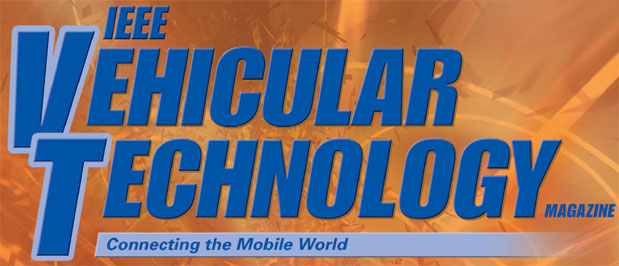Call For Papers:
Special Issue on Communications Support for Unmanned Air Transportation
Important Dates |
|
|---|---|
| Extended submission deadline: | 23 September 2019 |
| First Round Reviews by: | 2 December 2019 |
| Second Round Submissions by (extended): | 24 January 2020 |
| Second Round Reviews by: | 5 March 2020 |
| Publication: June 2020 | |
During the past few years, unmanned air transportation has come to the forefront of aviation research. Aviation authorities around the world have been making progress towards integrating drones or Unmanned Aerial Vehicles (UAVs) or Unmanned Aircraft Systems (UAS) into their national airspaces. In parallel, the private industry has been developing innovative applications, such as transportation of people and goods, medicine delivery, pipeline monitoring systems, and disaster-area aerial surveys. Projects such as the UAS Traffic Management (UTM) and Urban Air Mobility (UAM) demonstrate the high enthusiasm of the industry for unmanned air transportation. Before unmanned air transportation becomes a reality, there is a need to improve the reliability and security of UAV communications as they impact human safety.
Communication support for unmanned air transportation comes from three levels: satellites operating at the geostationary and low earth orbit levels, 4G/5G cellular networks operating on the ground, and ad hoc aerial networks operating in the mid-air. Today, with the support of a constellation of communication satellites, minute-by-minute global tracking of an aircraft is possible. In parallel, global standards for UAV communications and networks are also evolving. Global UTM association is leading the standardization efforts for UAS traffic management globally. IEEE recently initiated the P1920.1 and IEEE 1920.2 standards for aerial communications and networks and aerial vehicle to vehicle communications, respectively.
This special issue aims to share the progress and efforts being made by researchers, practitioners, and regulators towards the communication support for unmanned air transportation. This call solicits novel concepts that are currently being pursued or transformative ideas envisioned for the future of unmanned air transportation. Original submissions that discuss research, development, and evaluation strategies that support unmanned air transportation are encouraged within the following scope or related areas.
- Autonomy and cooperation
- Human-autonomy teaming
- Cooperative strategies for critical tasks such as sense/detect and avoid
- Geo-fencing, and trajectory design and optimization
- Ad hoc and mesh-networking of UAS
- Traffic management
- Command, control, and navigation
- Beyond radio line of sight communications
- Navigation in GPS-denied areas
- Drone-to-Drone and Drone-to-X communications
- UHF band thru mm-wave bands and beyond communications
- Massive MIMO and beamforming
- UAS integration in National Airspace
- Onboard sensors and their integration
- Flight-tests, test-beds, and simulations
- Safety, security and privacy Regulatory aspects
Authors should submit their manuscripts following the IEEE VTM guidelines at
http://www.ieeevtc.org/vtmagazine/submission.php
Authors should submit a PDF version of their complete manuscripts to
http://mc.manuscriptcentral.com/vtm-ieee
Guest Editors
Kamesh Namuduri (University of North Texas, USA)
Uwe-Carsten Fiebig (Institute of Communications and Navigation of DLR, Germany)
David W. Matolak (University of South Carolina, USA)
Helka-Liina Määttänen (Ericsson, Finland)
Ismail Guvenc (North Carolina State University, USA)
K.V.S Hari (Indian Institute of Science, India)

